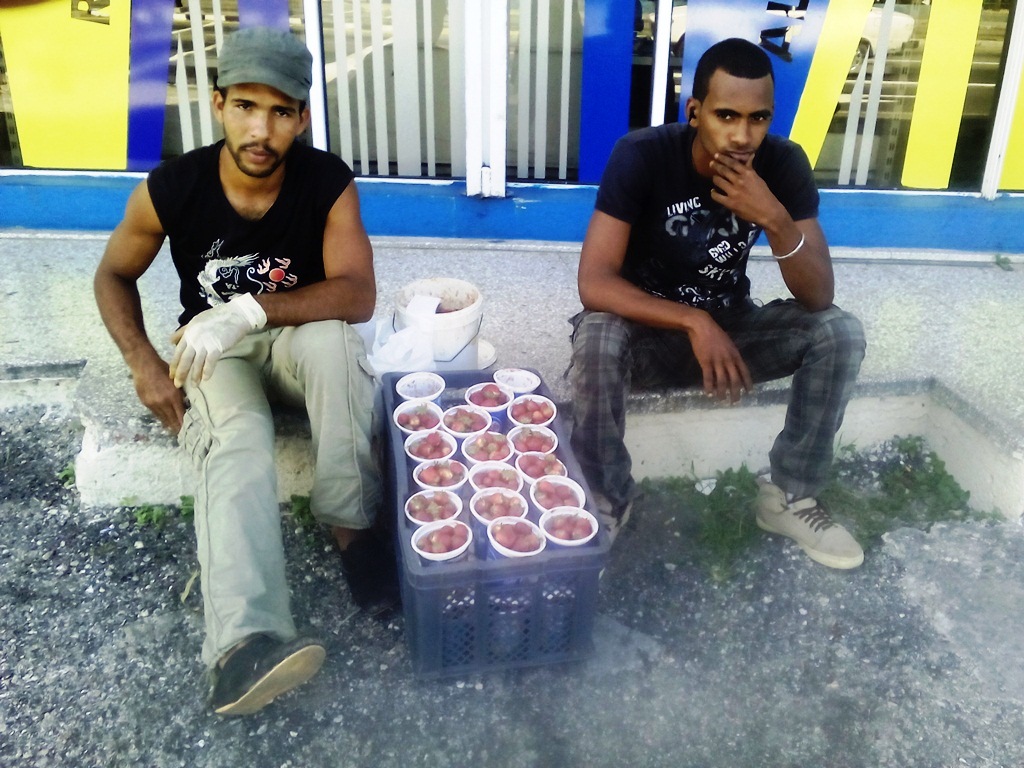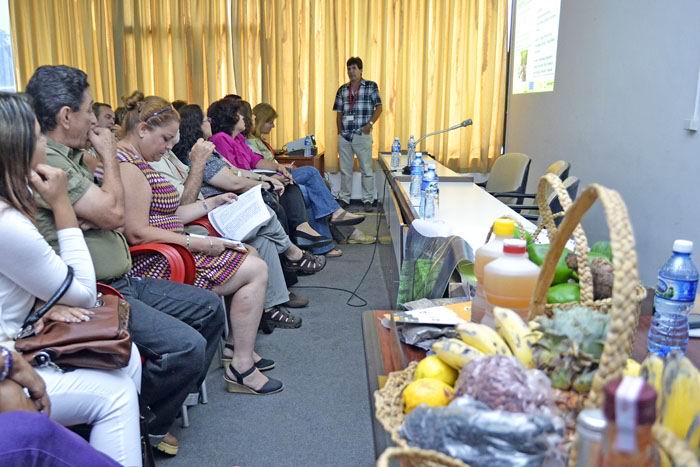Following the crisis of agricultural exports to Western Europe and Russia, which are the main target markets for fresh produce exports from Israel, the Ministries of Agriculture and Finance have designed a program to help pepper farmers overcome the crisis.
 |
| Photo source: http://www.haaretz.com |
The Ministry of Agriculture and the Ministry of Finance, together with the Israeli Farmer’s Federation, have reached a settlement concerning a new aid program, at the amount of 100 million NIS, for investments of pepper exporters from the Arava (south Israel). As part of the new program, farmers who convert their pepper growing areas to other crops will receive grants from the state at a sum of 70%, in an attempt to diversify the risk of farmers in peripheral areas and to maintain the existence and growth of agricultural communities.
Peppers have been the most significant export crop in Israeli agriculture in the last several years, with most of the growing areas located in the Arava, an area that relies on this crop as its main source of employment. A team led by the Acting Director General of the Ministry of Agriculture and Rural Development, And the Deputy Budget Director, together with the Israeli Farmer’s Federation, drafted an “aid package” intended for the fresh pepper exporters, which also provides a comprehensive focused solution for the Arava área.
As part of the program, whose budget stands at a total of 100 million NIS, farmers will be able to apply to the Ministry of Agriculture for receiving state issued grants, at a total amount of 70% of the amount invested, and for the first time will also be able to receive a down payment of 20% of the invested amount upon submitting the certificates required from farmers whose main crop is pepper, in order to convert their growing areas from pepper to other crops.
At the same time, a model for providing farmers whose crops are intended for export with long term loans from banks based on a state guarantee is also being examined currently. In addition, a new track for encouraging farmers to organize together for joint export will be published, together with strengthening the regional agricultural R&D in order to develop alternative crops to peppers.
Source: Ari Goren (www.freshplaza.com)
Peppers have been the most significant export crop in Israeli agriculture in the last several years, with most of the growing areas located in the Arava, an area that relies on this crop as its main source of employment. A team led by the Acting Director General of the Ministry of Agriculture and Rural Development, And the Deputy Budget Director, together with the Israeli Farmer’s Federation, drafted an “aid package” intended for the fresh pepper exporters, which also provides a comprehensive focused solution for the Arava área.
As part of the program, whose budget stands at a total of 100 million NIS, farmers will be able to apply to the Ministry of Agriculture for receiving state issued grants, at a total amount of 70% of the amount invested, and for the first time will also be able to receive a down payment of 20% of the invested amount upon submitting the certificates required from farmers whose main crop is pepper, in order to convert their growing areas from pepper to other crops.
At the same time, a model for providing farmers whose crops are intended for export with long term loans from banks based on a state guarantee is also being examined currently. In addition, a new track for encouraging farmers to organize together for joint export will be published, together with strengthening the regional agricultural R&D in order to develop alternative crops to peppers.
Source: Ari Goren (www.freshplaza.com)








 Wal-Mart U.S. President Greg Foran added a new strategic push to the retailer’s revitalization efforts: Its stores, Foran said, simply have to be more pleasant places to shop, The Washington Post reports. “We want this year to be the year of improving our stores, so by the time we hit holiday season, our stores are clean, tidy, well-merchandised and run by engaged associates,” Foran said. “Today, for the most part, they’re not.”
Wal-Mart U.S. President Greg Foran added a new strategic push to the retailer’s revitalization efforts: Its stores, Foran said, simply have to be more pleasant places to shop, The Washington Post reports. “We want this year to be the year of improving our stores, so by the time we hit holiday season, our stores are clean, tidy, well-merchandised and run by engaged associates,” Foran said. “Today, for the most part, they’re not.” The strong finances of Germany's second-biggest supermarket group REWE mean it is well positioned to pounce on potential acquisitions, its CEO said on Tuesday after profit grew faster than it expected in 2014. It reported a 3% rise in sales to €42.5B and a 29% jump in earnings before interest, taxation and amortisation (EBITA) to €468M, Reuters reports. He said that REWE was continuing to grow faster than the stagnant German supermarket sector in 2015, with sales at its stores up 4.6% in January and February.
The strong finances of Germany's second-biggest supermarket group REWE mean it is well positioned to pounce on potential acquisitions, its CEO said on Tuesday after profit grew faster than it expected in 2014. It reported a 3% rise in sales to €42.5B and a 29% jump in earnings before interest, taxation and amortisation (EBITA) to €468M, Reuters reports. He said that REWE was continuing to grow faster than the stagnant German supermarket sector in 2015, with sales at its stores up 4.6% in January and February. The Korean retailer has announced that its first mall and hypermarket in Vietnam will open in Ho Chi Minh City by October this year, retailanalysis.igd.com reports. Emart’s general director in Vietnam, Choi Kwang Ho, said that the retailer is investing up to US$ 60M in the new development at Go Vap, whilst it is also planning another four shopping malls over the next three years.
The Korean retailer has announced that its first mall and hypermarket in Vietnam will open in Ho Chi Minh City by October this year, retailanalysis.igd.com reports. Emart’s general director in Vietnam, Choi Kwang Ho, said that the retailer is investing up to US$ 60M in the new development at Go Vap, whilst it is also planning another four shopping malls over the next three years. Multi-channel grocery shopping is surging across the globe, according to a major new study by customer-science company Dunnhumby, nationmultimedia.com reports. The survey analysed the shopping habits of 7 million people in 14 countries in Europe, Asia and the Americas. The report revealed that huge growth was taking place across the full spectrum of multi-channel market development, with nascent markets such as Thailand growing by more than four times year on year. Even the most established online grocery categories were still enjoying significant growth globally.
Multi-channel grocery shopping is surging across the globe, according to a major new study by customer-science company Dunnhumby, nationmultimedia.com reports. The survey analysed the shopping habits of 7 million people in 14 countries in Europe, Asia and the Americas. The report revealed that huge growth was taking place across the full spectrum of multi-channel market development, with nascent markets such as Thailand growing by more than four times year on year. Even the most established online grocery categories were still enjoying significant growth globally. Amazon's new 'Kirana Now' programme, which promises to deliver orders from small neighbourhood stores in two to four hours, was launched as India's budding online grocery retailers increase focus on timely delivery instead of building warehouses, indiatimes.com reports. The service offers convenience to customers and increases business for local stores.
Amazon's new 'Kirana Now' programme, which promises to deliver orders from small neighbourhood stores in two to four hours, was launched as India's budding online grocery retailers increase focus on timely delivery instead of building warehouses, indiatimes.com reports. The service offers convenience to customers and increases business for local stores. In the UK, Tesco announced that it would be introducing "bouncy aisles" so that customers could jump to hard-to-reach upper shelves and have fun while grocery shopping, supermarketnews.com reporst.
In the UK, Tesco announced that it would be introducing "bouncy aisles" so that customers could jump to hard-to-reach upper shelves and have fun while grocery shopping, supermarketnews.com reporst.  Thousands of staff at Dunnes Stores are staging a one-day strike in a dispute over low-hour contracts, job and income security and the right to trade union representation, bizjournals.com reports. More than 6,000 of the union's members at Dunnes Stores are taking part in the strike. While Dunnes management has not issued any formal comment, in a recent letter to staff they warned that the strike could harm the company and lead to redundancies.
Thousands of staff at Dunnes Stores are staging a one-day strike in a dispute over low-hour contracts, job and income security and the right to trade union representation, bizjournals.com reports. More than 6,000 of the union's members at Dunnes Stores are taking part in the strike. While Dunnes management has not issued any formal comment, in a recent letter to staff they warned that the strike could harm the company and lead to redundancies. The Kroger Co. has bought the former Nash Finch Co. distribution facility and land in Blue Ash, cincinnati.com reports. Cincinnati-based Kroger closed on a deal Friday to buy the property spanning more than 25 acres for $9.3M, according to the Hamilton County auditor's office.
The Kroger Co. has bought the former Nash Finch Co. distribution facility and land in Blue Ash, cincinnati.com reports. Cincinnati-based Kroger closed on a deal Friday to buy the property spanning more than 25 acres for $9.3M, according to the Hamilton County auditor's office. PNC Financial Services Group Inc. on Wednesday said it led a $210M financing round for a Pacific Northwest grocery retailer to fund conversions of 146 acquired stores, bizjournals.com reports.
PNC Financial Services Group Inc. on Wednesday said it led a $210M financing round for a Pacific Northwest grocery retailer to fund conversions of 146 acquired stores, bizjournals.com reports.  Germany's competition watchdog has decided to prohibit a plan by the country's biggest supermarket group Edeka to buy grocery chain Kaiser's, despite concessions it made, it said on Wednesday, Reuters reports. Andreas Mundt, who heads the competition watchdog, said the takeover would further limit competition in big cities like Berlin and Munich, giving Edeka a market share of more than 10% in some places, potentially leading to price rises.
Germany's competition watchdog has decided to prohibit a plan by the country's biggest supermarket group Edeka to buy grocery chain Kaiser's, despite concessions it made, it said on Wednesday, Reuters reports. Andreas Mundt, who heads the competition watchdog, said the takeover would further limit competition in big cities like Berlin and Munich, giving Edeka a market share of more than 10% in some places, potentially leading to price rises. In Taiwan, leading convenience players 7-Eleven and FamilyMart are developing new mobile solutions including e-payment and iBeacon technology in order to create a seamless shopping experience, retailanalysis.igd.com reports.
In Taiwan, leading convenience players 7-Eleven and FamilyMart are developing new mobile solutions including e-payment and iBeacon technology in order to create a seamless shopping experience, retailanalysis.igd.com reports. 














